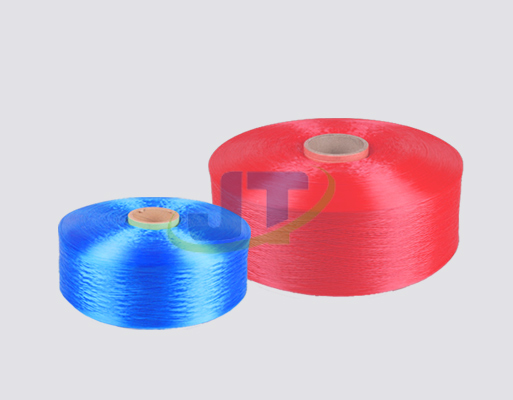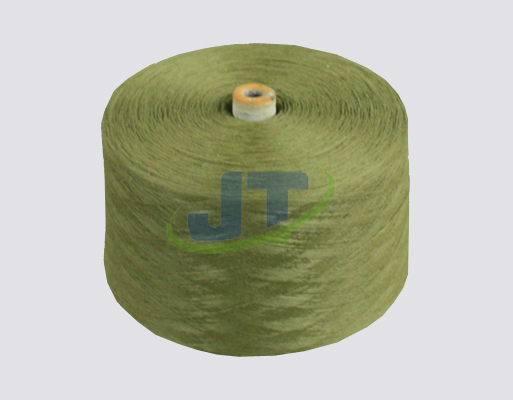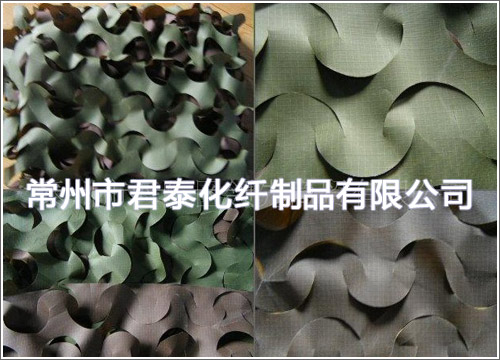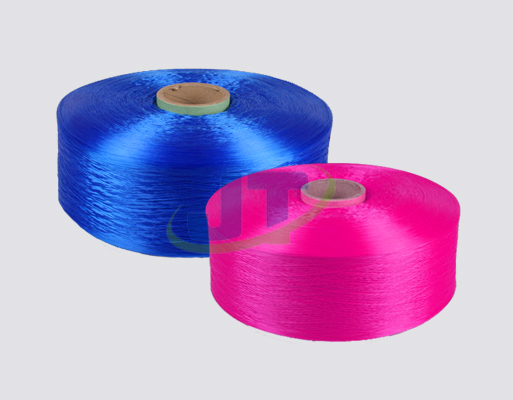

- Tel:0086-519-83783531
- cel:0086-13961177625
- E-mail:jianglijing1022@126.com
- add:cheng zhang Jia zeTown Wujin District, Changzhou City, Jiangsu Province
Since the resumption of the market on May 27, the sales of pure cotton in the traditional market of China Textile City are still smooth, and the thickness of various varieties interacts; however, the sales show a differentiated pattern. The transaction in the operating stores was relatively smooth, and the transaction in some small and medium-sized operators was still relatively insufficient. The transaction of pure cotton fabrics fluctuated and rose slightly.
According to the seasonal demand in previous years, the demand for autumn fabrics should increase. Recently, there are relatively more varieties of pure cotton thick tooling and canvas, but most of them are in the quotation link. In fact, there are very few samples and orders. And this year is a special year, breaking many previous demand laws, making the market trend more difficult to figure out, and weakening all the way, leaving many companies at a loss. This year is a special year. It is difficult to make breakthroughs in export sales, domestic sales demand decreases, factory inventories increase, follow-up orders are insufficient, and the common phenomenon of production cuts and holidays is an unavoidable reality for all manufacturers. Judging from the current market conditions, domestic sales competition is fierce and foreign trade recovery is difficult. Weaving manufacturers will continue to accumulate inventory. If there is no substantial change in the market outlook, the operating rate of manufacturers may further decline. Under the current circumstances, most factories will adopt the self-help method of reducing production and strive to persevere through this low period.
The continuation of the epidemic abroad has made the international situation even more severe. Affected by the epidemic, foreign trade orders have decreased, prices have been weak, and the inventory of apparel fabrics has been severely squeezed, resulting in serious losses. There is no place to continue production, and production and operation are already facing difficulties. Whether it is from garment factories, weaving manufacturers or printing and dyeing enterprises, they have begun to worry about the market outlook. Apparel fabrics are the most difficult this year. On the one hand, the epidemic in the first half of the year has missed the best sales season in summer. On the other hand, the inventory in autumn and winter has not been consumed. In addition, the seasonal requirements of clothing are high, the styles are popular, and the delivery time is fast. Tension, some weaving factories and garment factories that mainly focus on apparel fabrics have to choose to shut down for holidays to avoid the pressure of accumulating warehouses; people in the weaving factory feedback that the current inventory in the factory is mostly the inventory placed in the previous year, and the cloth dealer has not given any information. Clearly pull away time. For the current textile industry, the recovery of orders for weaving companies will take a long and difficult time.
Recently, the domestic sales market has improved compared to the previous period, and the market has become active locally. Throughout the fabric market of China Textile City, "light" is still its main tone. However, it is worth noting that many regions have begun to relax the control of the epidemic, gradually lift the blockade restrictions, and resume work and production one after another, which will undoubtedly inject a "stimulant" for domestic textile workers.
With the spread and escalation of the global epidemic, large-scale cancellation of international orders or delayed delivery, and a substantial increase in international logistics costs, it is difficult to maintain the gradual improvement of the industry operation. The industry operation will be affected by insufficient global demand and poor economic circulation. Operation is not optimistic. The global crisis has not been lifted, and it is difficult for the terminal demand to increase substantially in the short term.
The overseas epidemic continued to spread and gradually became normalized. The intensified conflict between Russia and Ukraine had a great impact on the domestic weaving market, and the production of enterprises continued to slow down. Since the outbreak of the overseas epidemic and the Russian-Ukrainian conflict, the export orders of cluster weaving enterprises have continued to decrease. Affected by the epidemic and the Russian-Ukrainian conflict, there have been fewer new orders, and most of them are short-term small orders. Weaving equipment utilization continued to decline. Weaving enterprises have adopted measures to limit and reduce production, and some small and medium-sized enterprises have increased the phenomenon of suspension of production and holidays. Most cluster weaving companies said that if there are no new orders in the near future, they will partially reduce production. Some export enterprises said that the pressure of exporting to domestic sales is relatively high. Individual weaving cluster enterprises have switched to producing masks and meltblown cloth and other epidemic prevention supplies. Due to the lack of orders, some cluster weaving enterprises adopted inventory sales, which took up a lot of funds, resulting in further intensified inventory pressure and capital pressure. In order to stabilize the workforce, some companies implement the employee rotation system, which brings great pressure on labor costs. During this period, some clusters further standardized management, upgraded the industrial structure, and took the road of sustainable development.
Recently, the domestic epidemic situation has been gradually brought under control. In order to ensure the smooth flow of logistics, the state has introduced a series of policies to actively promote the resumption of work and production of enterprises. Weaving enterprises are gradually recovering, and the replenishment of some downstream enterprises will increase slightly day by day.
China still adheres to the "dynamic clearing" policy for the epidemic, and it is expected that the negative impact of the epidemic in the later period will gradually ease. Recently, the State Council issued a notice on the joint prevention and control mechanism for the novel coronavirus infection and pneumonia outbreak, deploying and effectively doing a good job in ensuring the smooth flow of freight and logistics. It is strictly forbidden to block or close expressways, ordinary roads, and waterway locks without authorization, and it is strictly forbidden to set up epidemic prevention checkpoints on the main lines and service areas of expressways. Therefore, the obstruction of follow-up logistics is expected to ease, so that the demand for the entire textile and clothing will also improve.
Recently, the operating rate of major cluster manufacturers has increased month-on-month, and many manufacturers have increased operating rates, and some companies are even operating at full capacity.
Since the resumption of the market on May 27, various types of grey fabrics, such as pure cotton gauze, pure cotton yarn, pure cotton canvas, pure cotton poplin, pure cotton Bali yarn, etc. in the traditional market, have different amounts of grey cloth. The single dyed finished products in the traditional market are pure There are many spot transactions of cotton fabrics and finished fabrics dyed by full process and multi-process dyeing. However, some small business households sell small batches of spot goods in small batches, and the transaction volume is still relatively insufficient.
Recently, in the traditional market of China Textile City, there has been a slight increase in the listing of dyed pure cotton grey fabrics for tooling. There are relatively many varieties of finished pure cotton fabrics listed on the market, and the spot listing is still relatively limited. The domestic demand orders of target customers are partially placed, but foreign trade orders are still relatively insufficient. Some of the counterpart garment manufacturers have small orders and large orders, but due to factors such as credit delivery and difficult payment, some large orders for pure cotton fabrics are still relatively limited.
Since the market resumed on May 27, all kinds of pure cotton apparel fabrics, pure cotton decorative fabrics, yarn-dyed pure cotton fabrics and other fabrics have interacted with knitting and warp knitting varieties in the China Textile City market. So far, pure cotton fabrics have been traded. The shock pushed up, and the incremental sales of targeted fabrics were differentiated, and the market sales of small and medium-sized operators were still relatively insufficient. Due to the lack of domestic sales orders for pure cotton fabrics from small and medium-sized business operators, and the difficulty in controlling foreign trade orders due to the foreign epidemic situation, the foreign trade business of the fabric market in China Textile City is still relatively insufficient recently, resulting in the relatively low transaction varieties and volumes of pure cotton fabrics in the China Textile City market. limited. Supported by domestic demand, the transaction of pure cotton cloth showed a pattern of shock and small increase.
- Let's take a look at the diversi
- China is directly facing the imp
- What are the core advantages of
- In November, the decline in Chin
- What is the value of Polypropyle
- The 2025 Textile Industry Discip
- The core performance advantages
- Black Friday is becoming a perfo
- Why has polypropylene high-stren
- The global trade landscape is un




